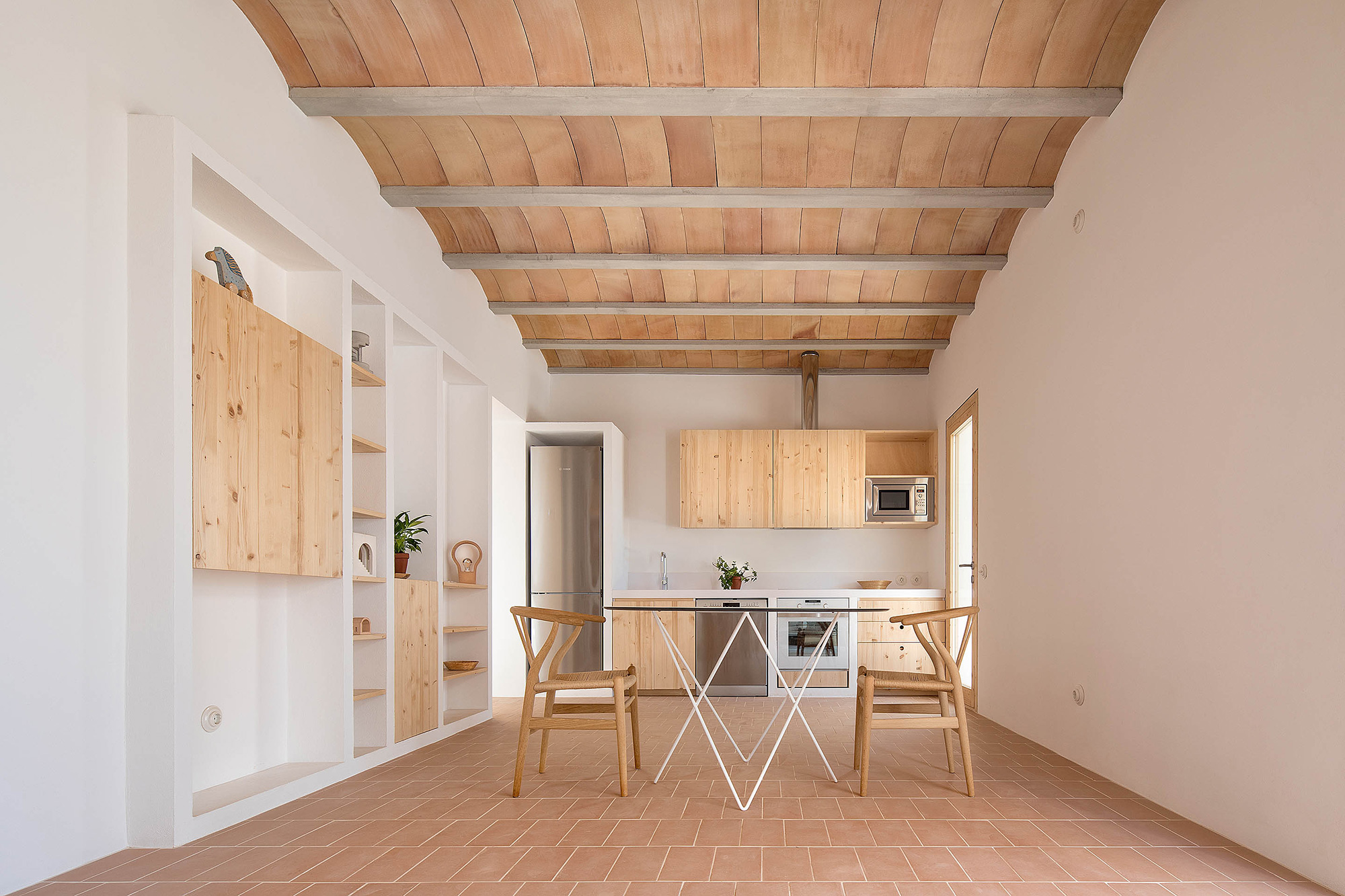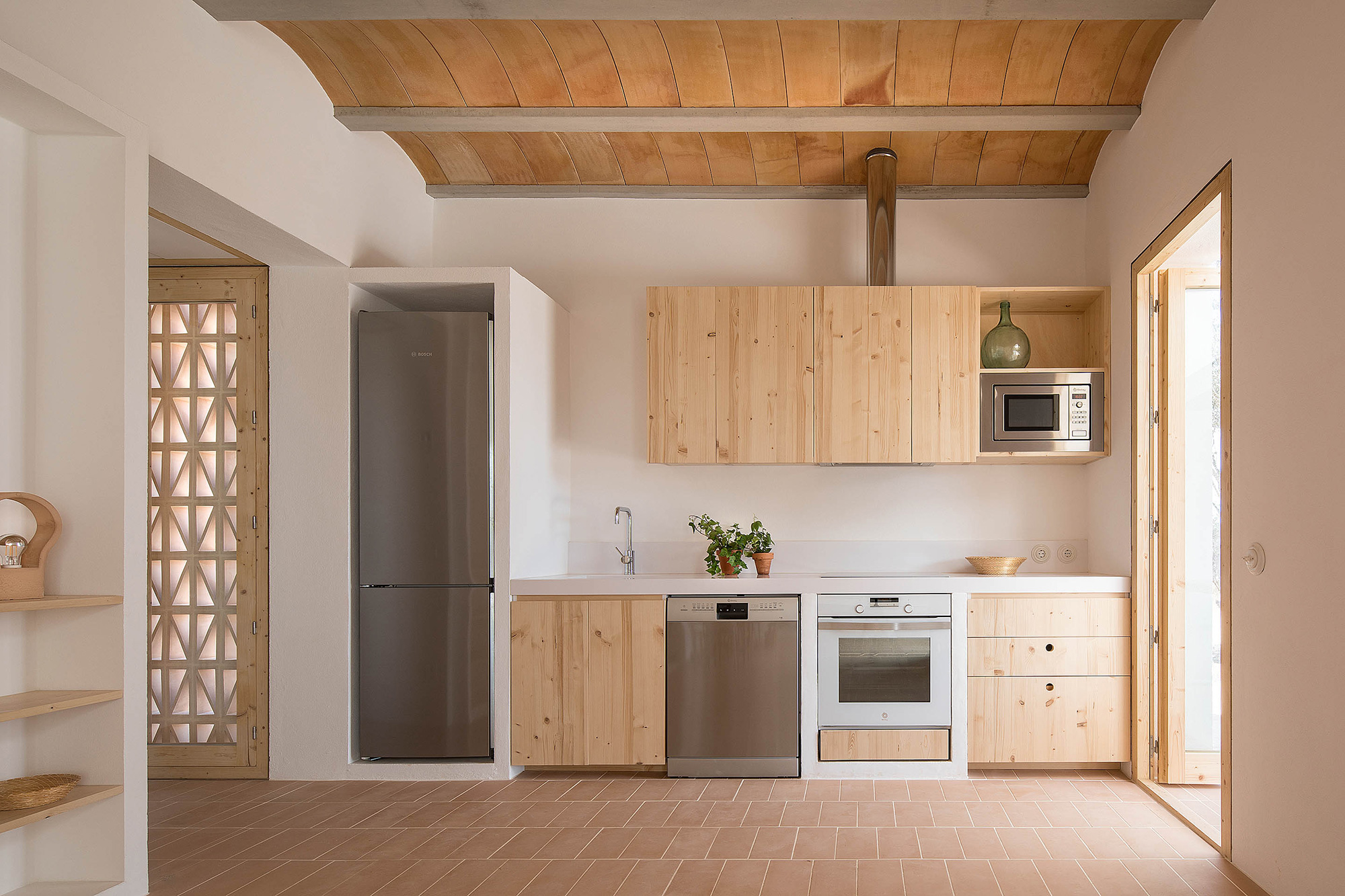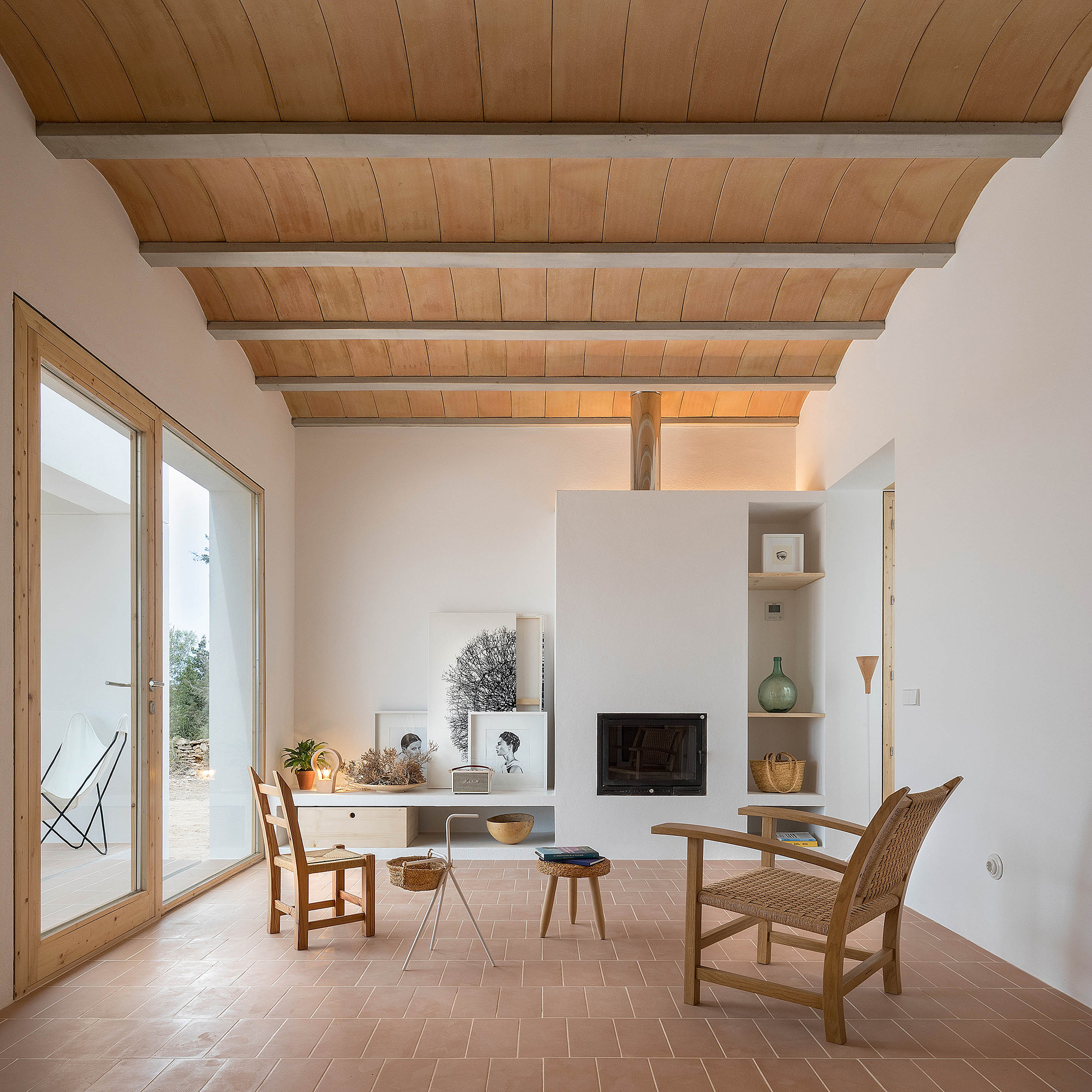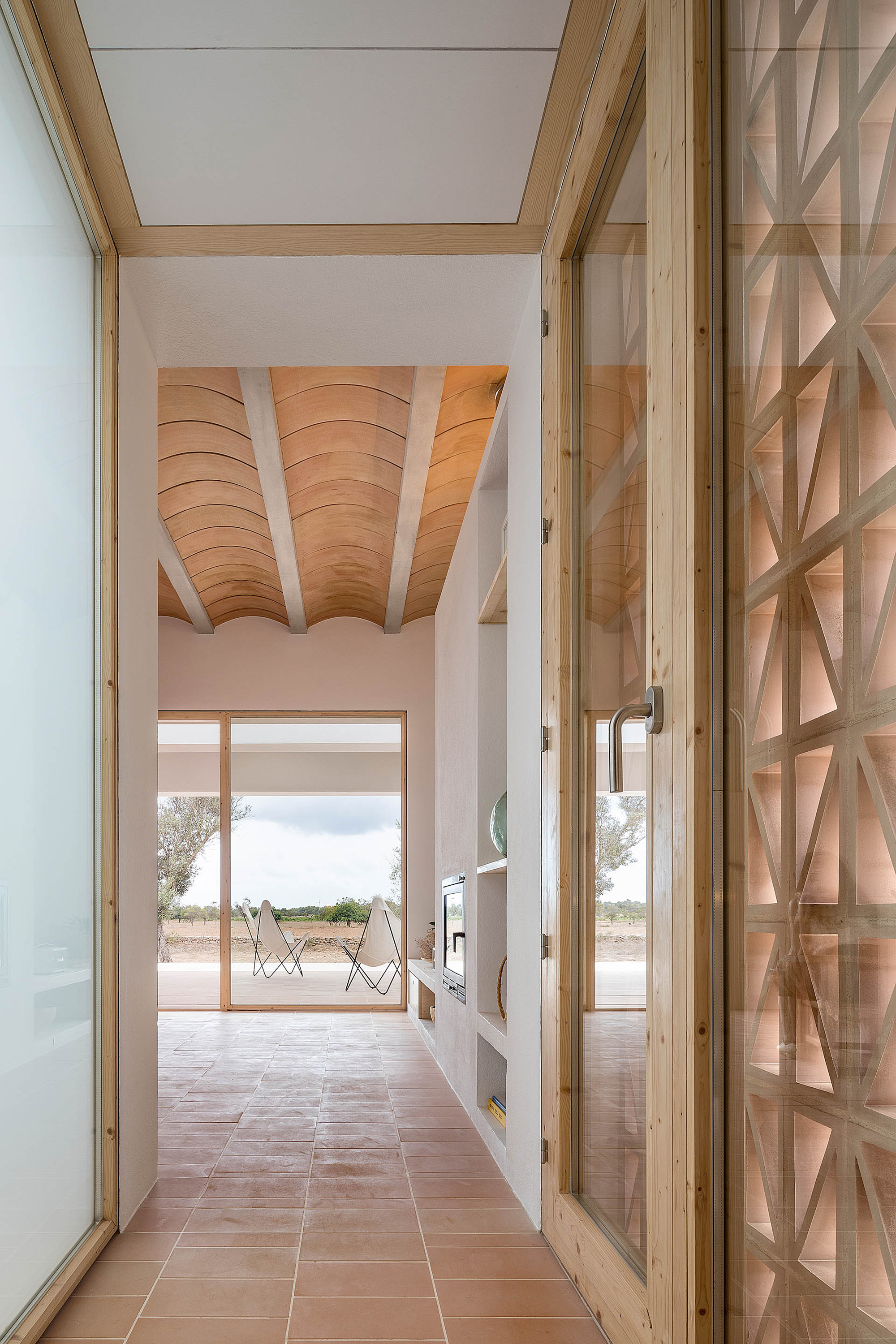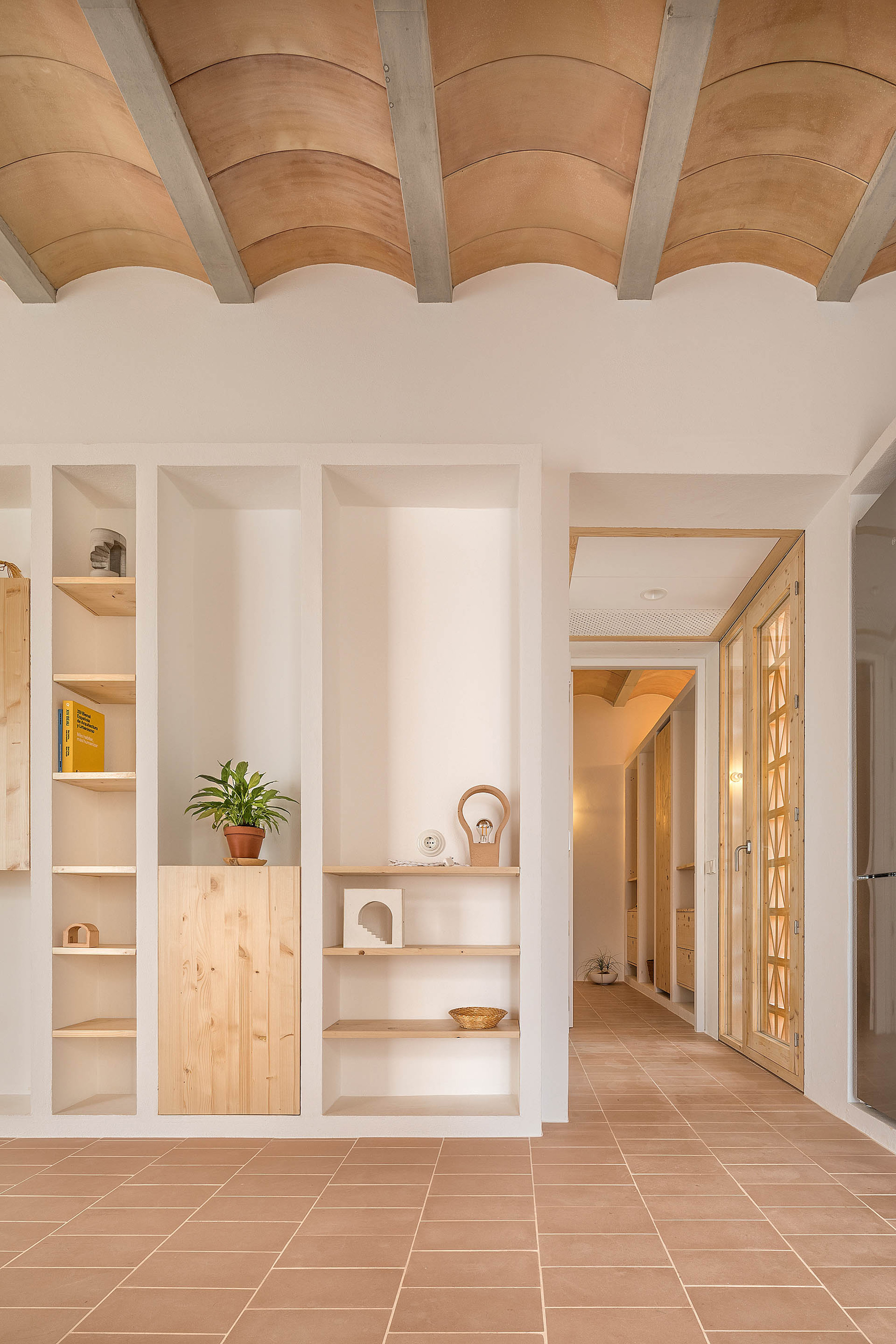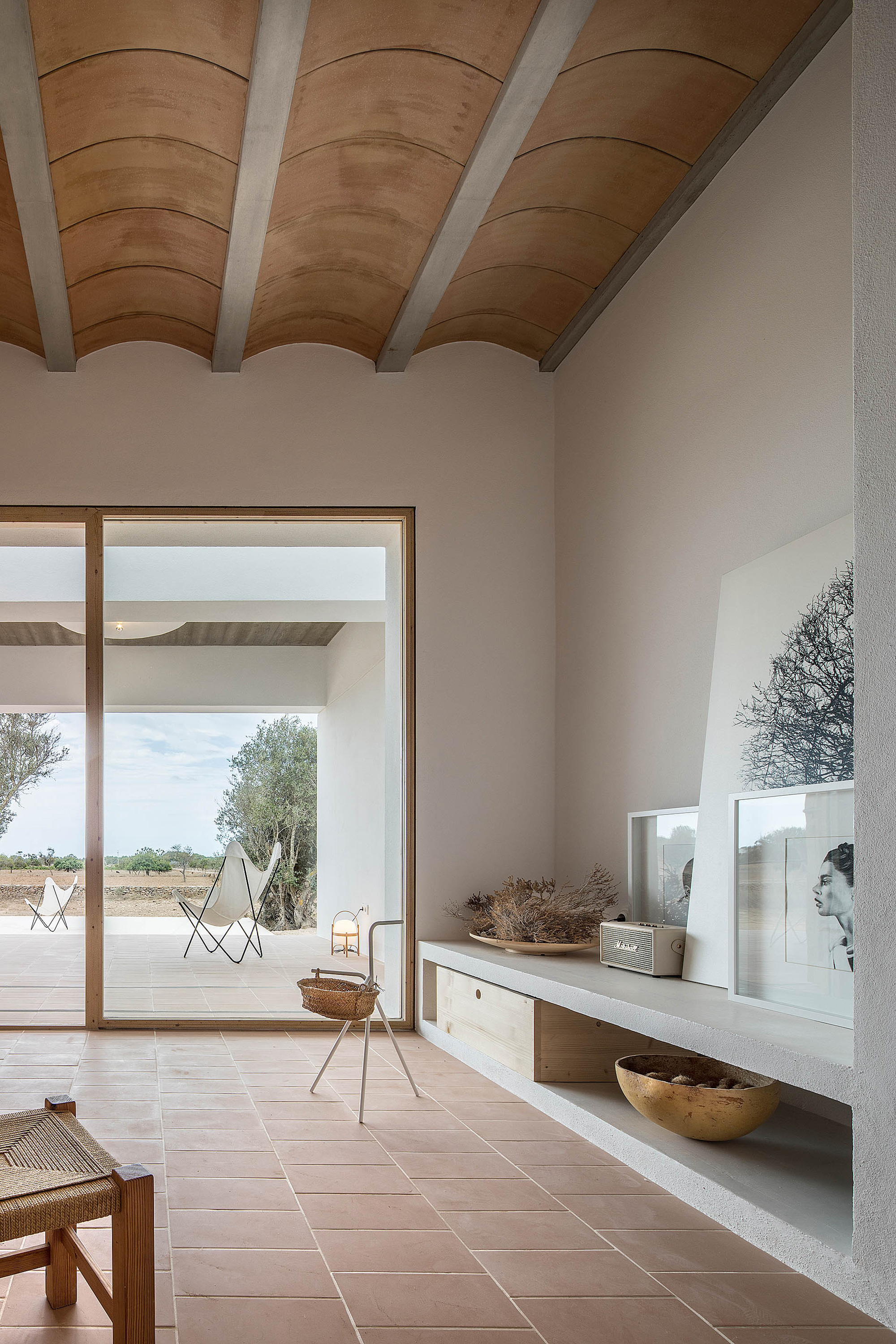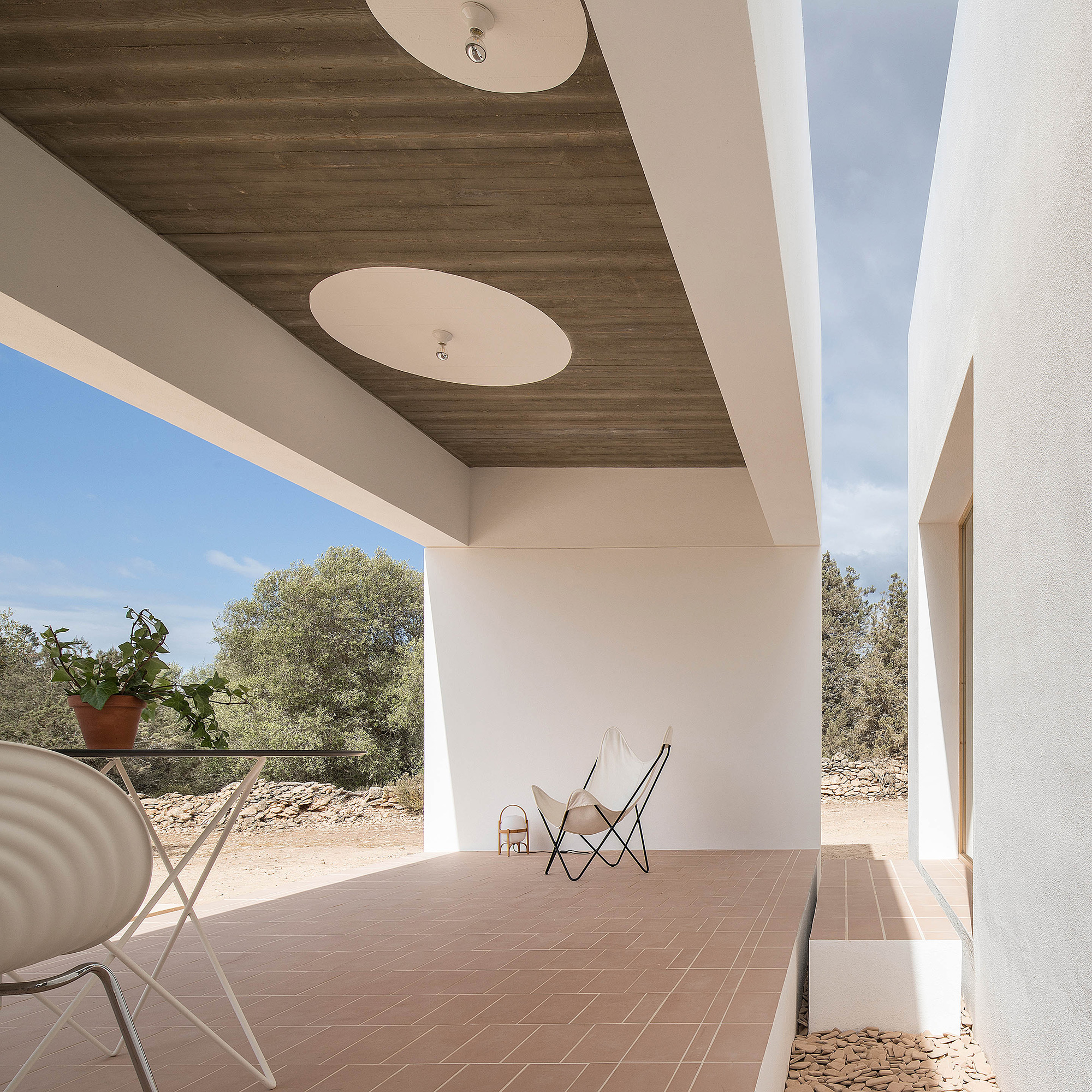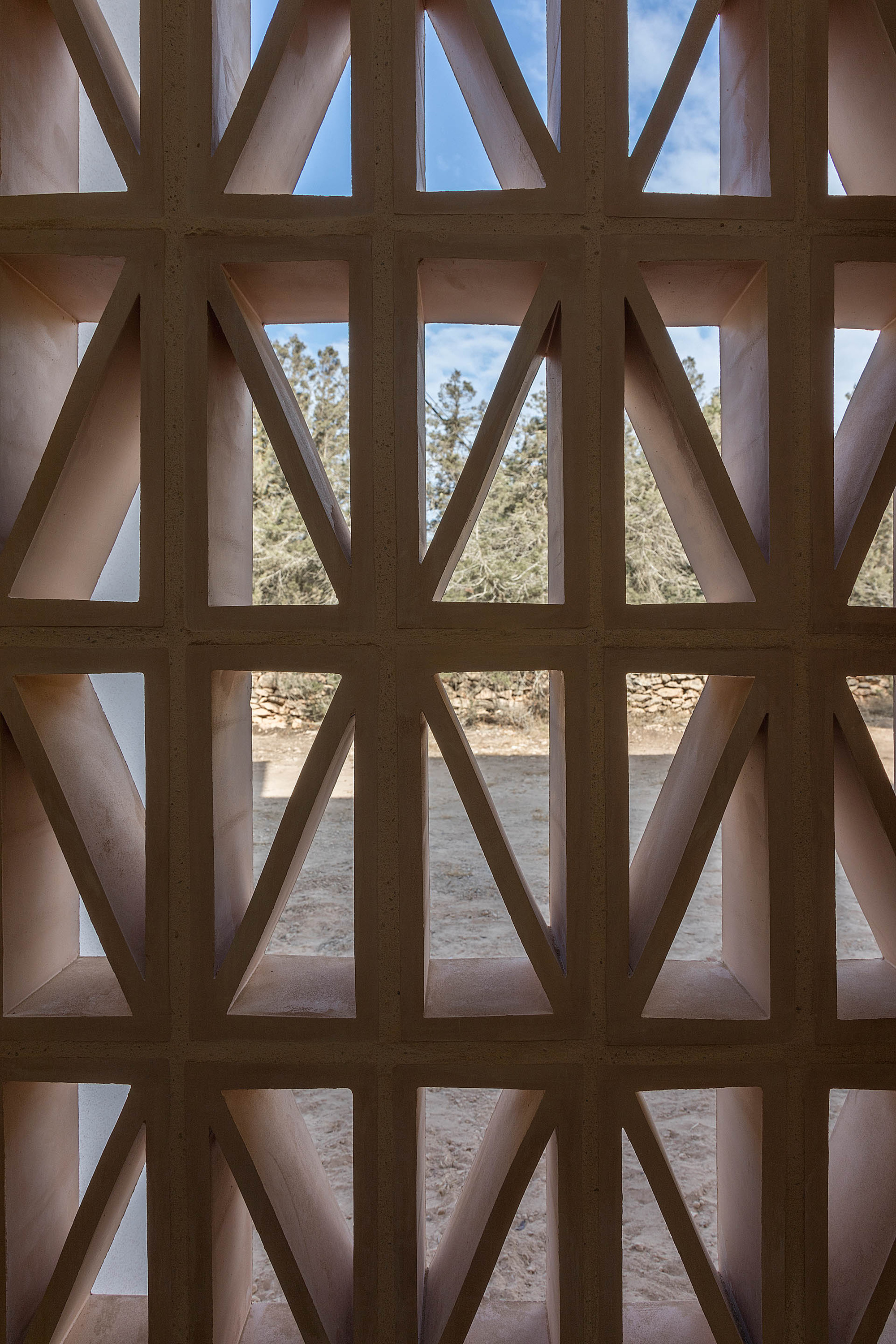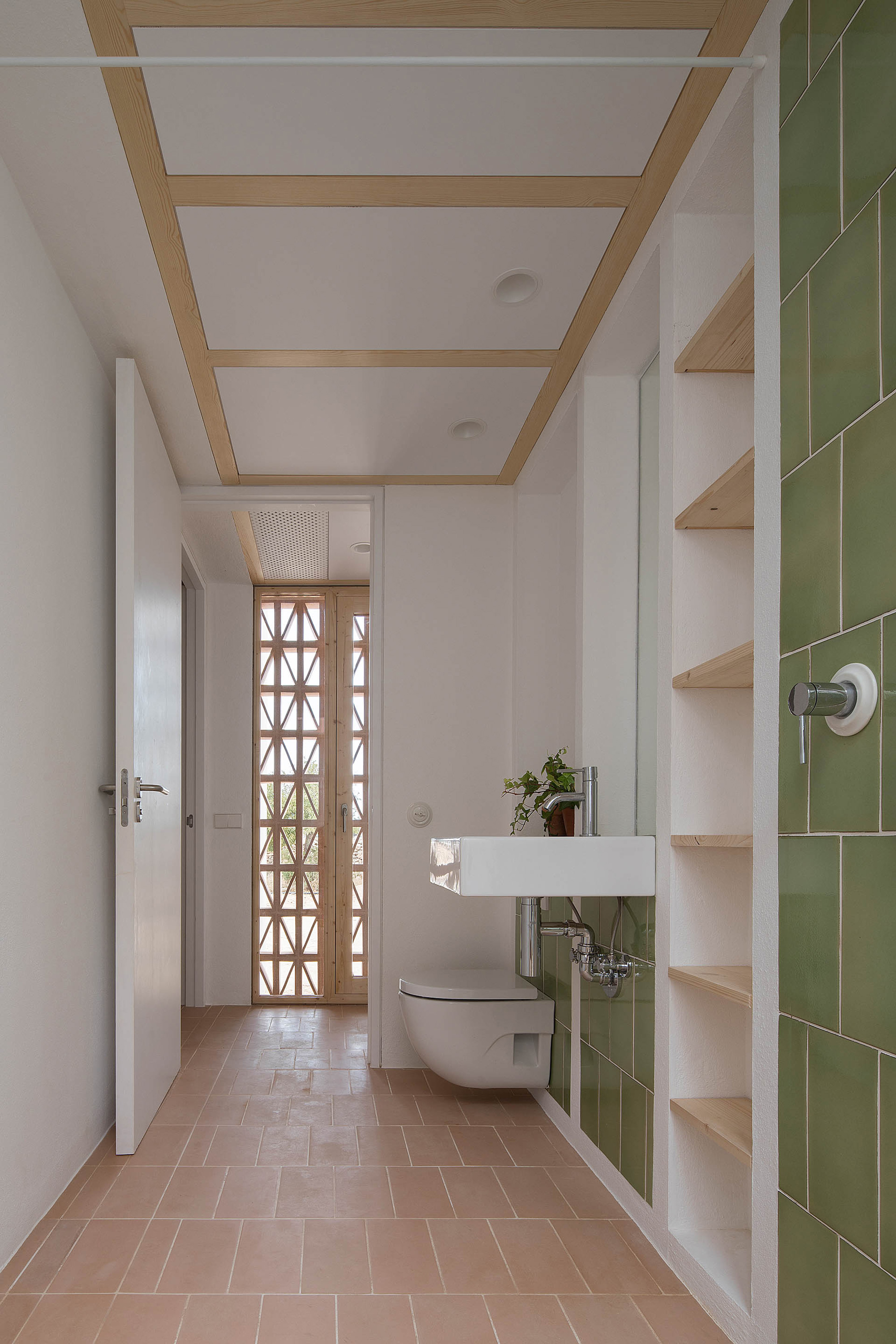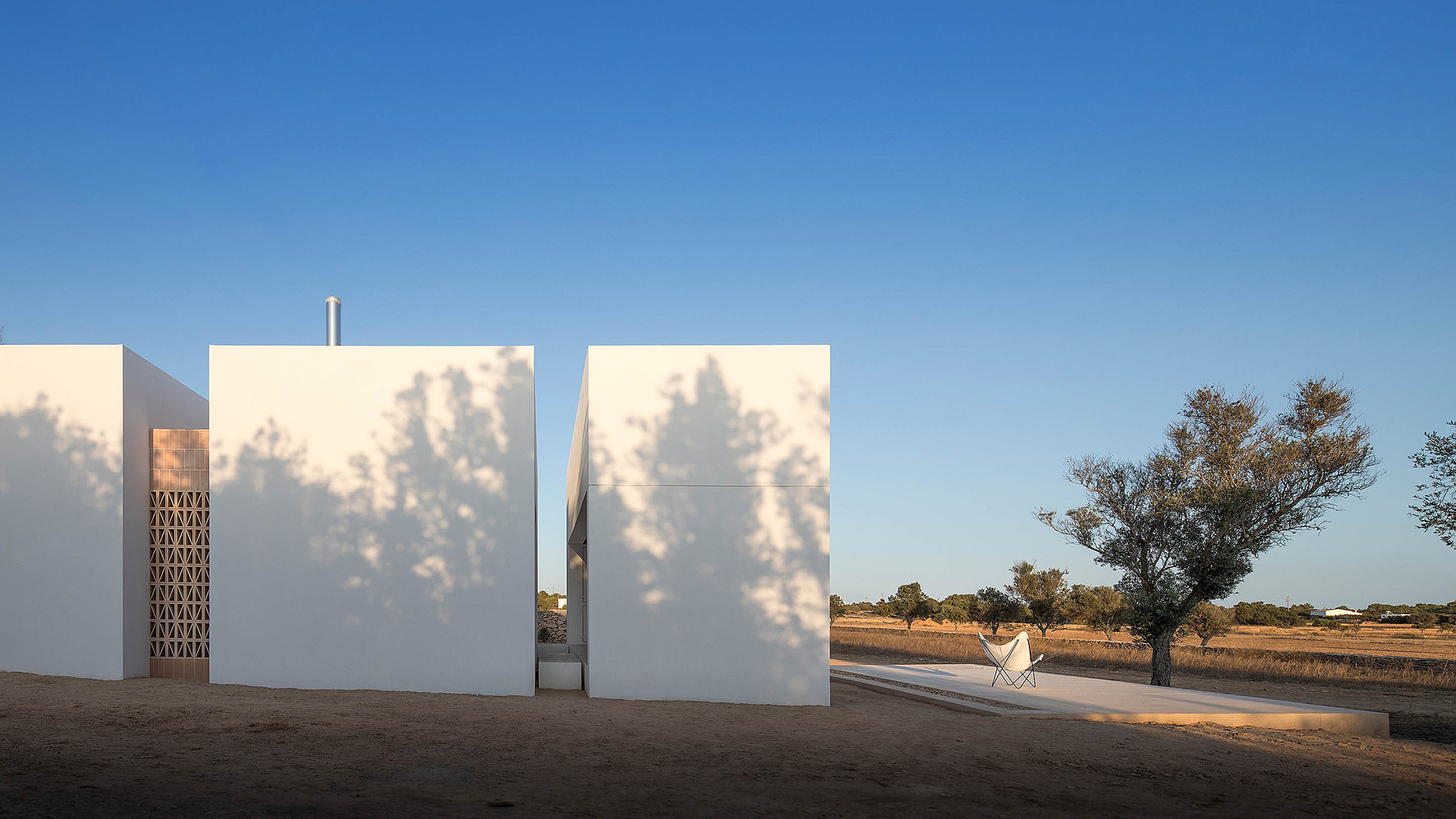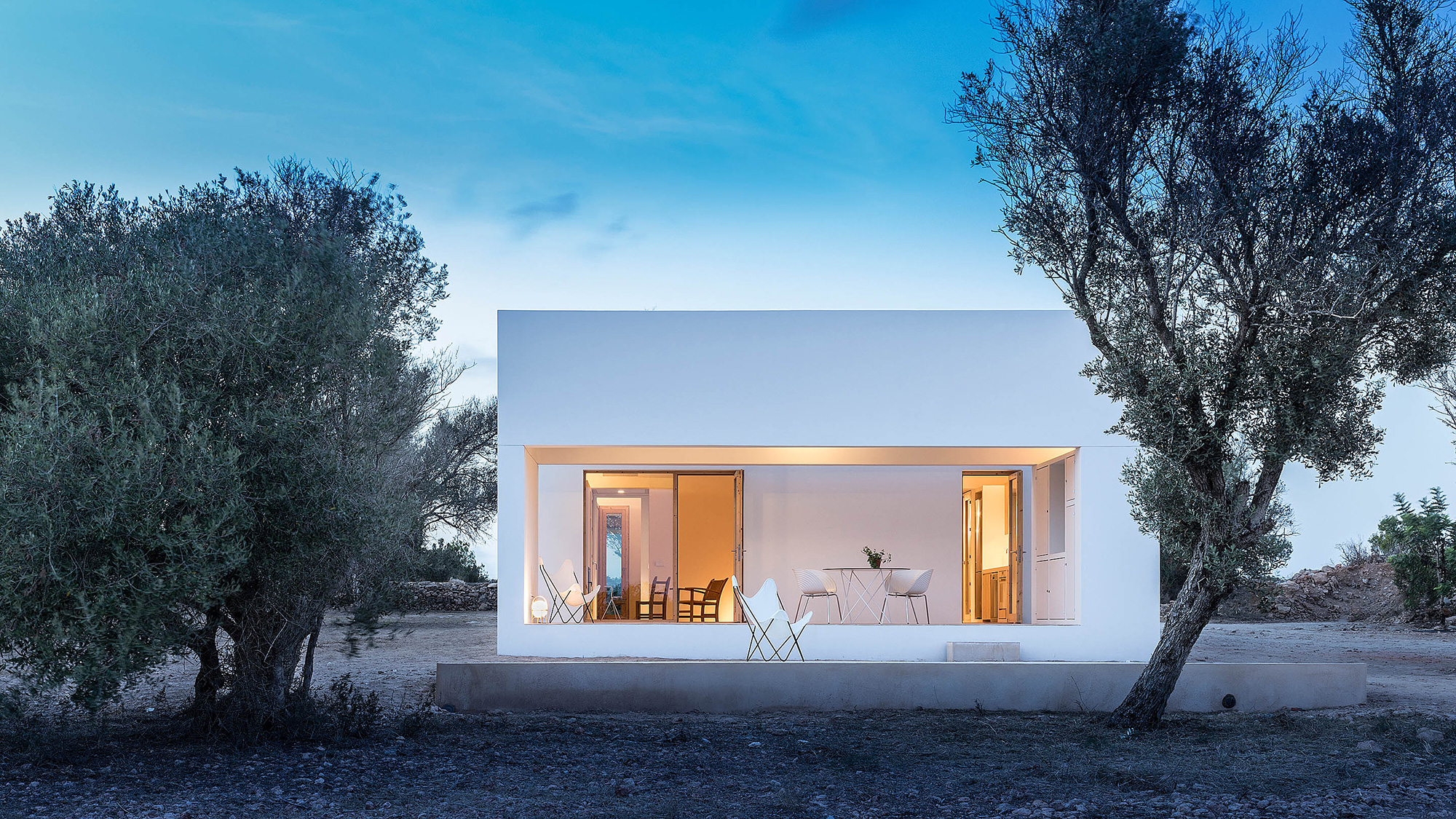A modern dwelling that celebrates the landscape and traditions of the island of Formentera.
Named after a historical place on the island of Formentera, Spain, Es Pou is a minimalist house that pays homage to the area’s artisan traditions. Architect Marià Castelló nestled the dwelling on a rural plot surrounded by agricultural land and centenarian dry stone walls. The position of the structure minimizes the impact on existing agricultural activity, while vegetation shelters the living spaces from the heat of the setting sun. Es Pou features three interconnected volumes designed with a simple rectangular form and white walls. The first module houses a porch that provides a comfortable lounge space and also doubles as a solar buffer. The second volume contains the kitchen, dining area, and a small lounge space, while the third houses two bedrooms.
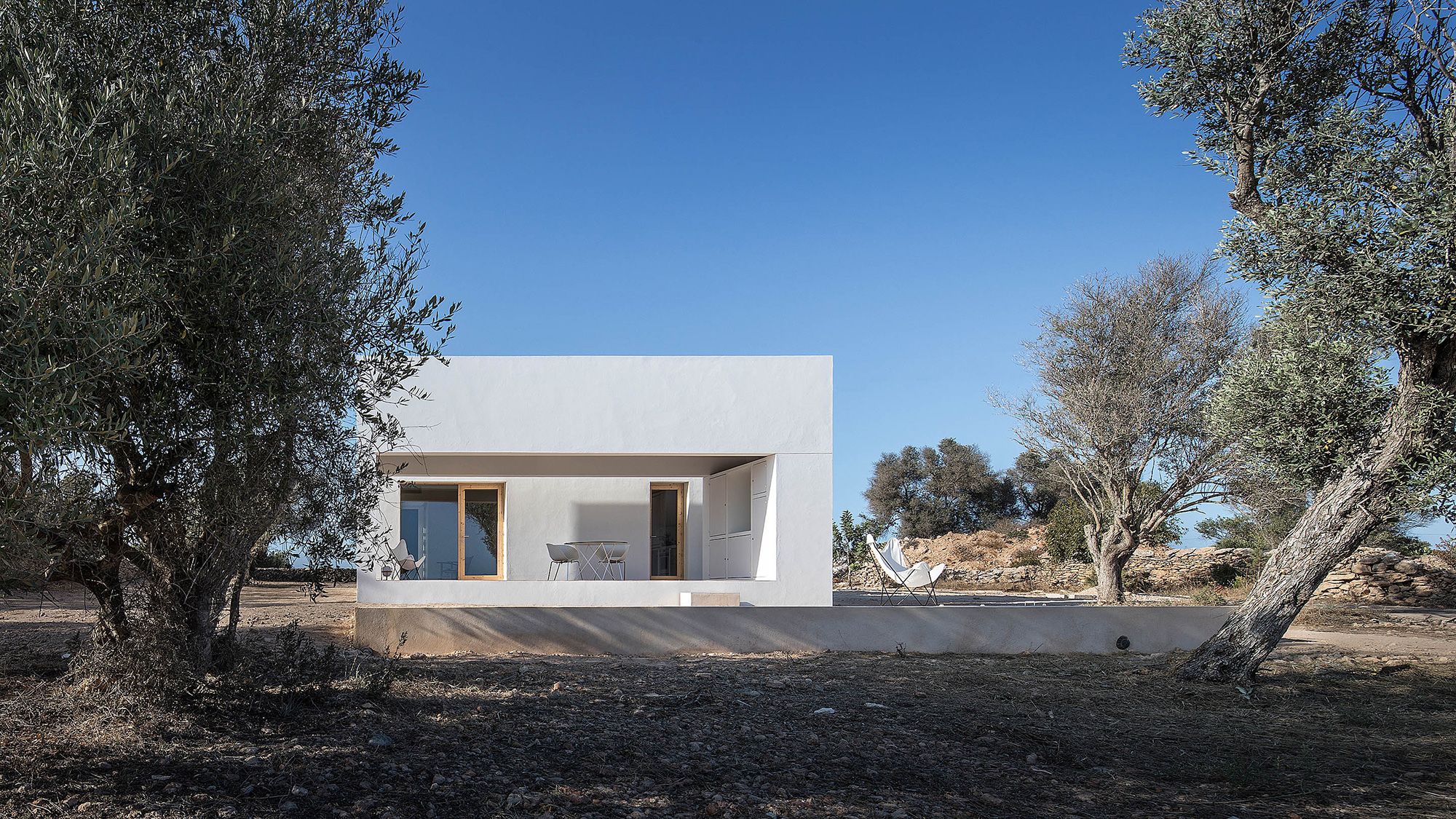
Transversal strips separate the three modules and provide ventilation and lighting at the same time. Sunshine filters through ceramic lattice patterns, creating a play between shadow and light throughout the day. In front of the house, a large platform contains a built-in water cistern that makes the dwelling self-sufficient. The inhabitants can also use this space as a solarium during the winter.
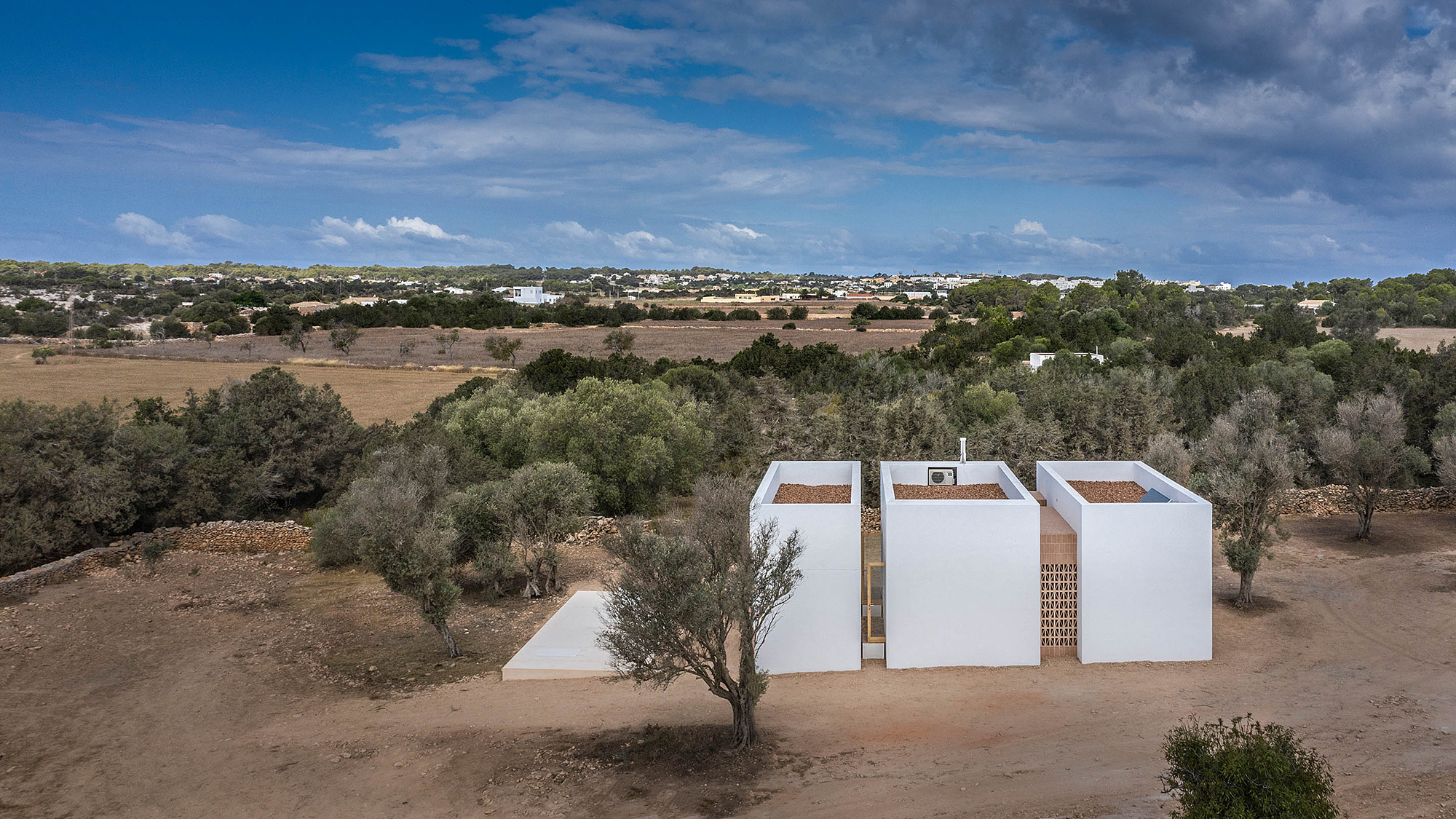
Interiors that pay homage to the island’s traditions.
Inspired by the island of Formentera, the material palette pays homage to the surrounding landscape and local traditions. The architect used a blend of ceramics and wood throughout the interior, in light colors that mirror the hues of the earth as well as the nearby wheat and oat fields. The ceilings boast Mallorcan-style ceramic vaults while the flooring features pressed terracotta tiles. The warm terracotta also appears on the façade cladding, roofs, and pebble gravel. In the master bedroom, the headboard features custom lighting specially made for Es Pou. Inspired by the original house on the “Can Marianet Barber” estate, the sculptural lamps reference the architect’s Architecture Fragments art project.

In the bathroom, vitrified ceramic tiles with a light green color remind of the nearby fig and almond trees. For the interiors, Marià Castelló used custom, built-in furniture as well as iconic pieces like the 1934 Torres Clavé armchair or traditional chairs from the Formentera region. Tables designed by the architect and Lorena Ruzafa for Diabla Outdoor bring a contemporary accent to the décor. Photography© Marià Castelló Martínez.
